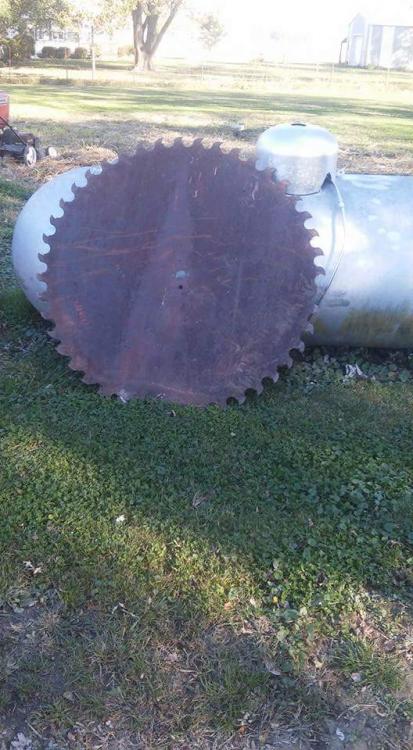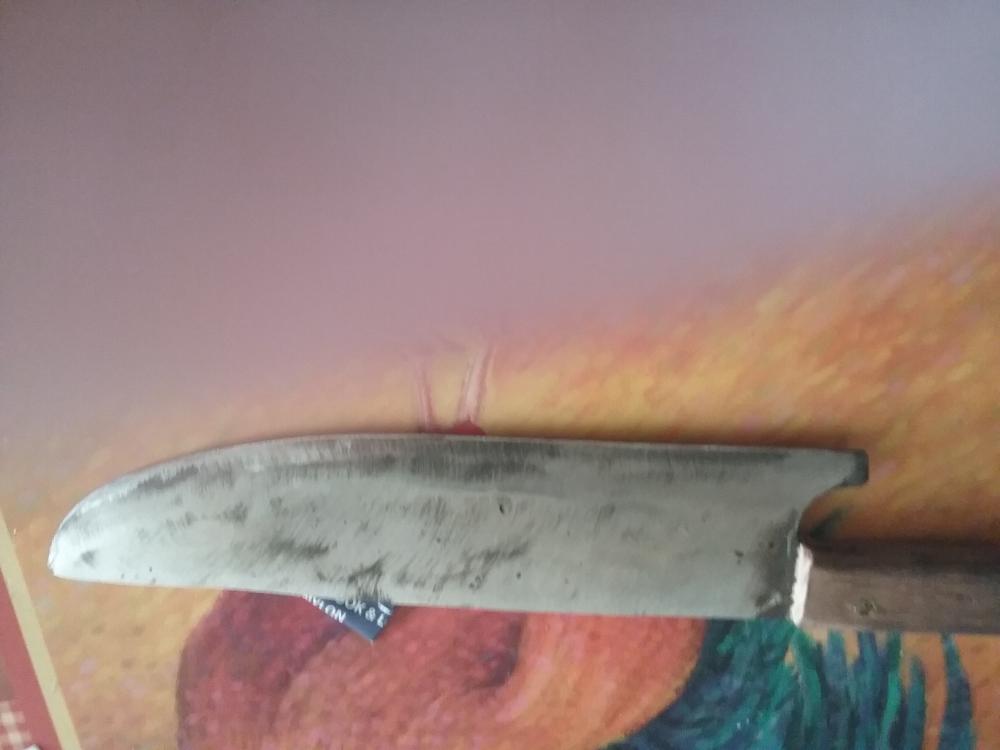
David Farmer
Members-
Posts
10 -
Joined
-
Last visited
Recent Profile Visitors
596 profile views
-
I picked this up as I've seen many times these old saw blades make very good knives. And there's a lot of steel in a 56" sawmill blade for projects let me tell ya. Unfortunately now I think it's way to nice a piece to sacrifice. Now if I can con my wife into painting a picture of Heaphaestus at the forge or something on it it's going to become my way to big, potentially deadly shop clock. Been having a heck of a time finding new steel in my area ( heard many horror stories of buying online) but I think I tracked one down today. Hopefully in the next week or so I'll have some pics to share.
-
I weld cast all day, every day. Gas shielded flux core wire mig welding. Find the right guy in your area it can be fixed in minutes. Being as it's cast and depending on how much of the casting material is in the steel itself you can expect more cracks later. If you clay it and be sure to bring your heat up slowly, especially if it's cold out, you can avoid most of that though. Very nice find by the way!
-
That's depending if I can get them. As long as there are no weird legalities involved should be easy enough. Didn't think they'd be worth anything but scrap honestly till JHCC filled me in. When and where is Quad state17 JHCC? Regardless of any of this I'd love to go.
-
That's a pretty xxxx good idea he had there. Of course if I could get a scrapped out E69 rail coupler I'd have a 6 foot long anvil to play with too. Those nuckles are tough. They're not very big but weigh 50 or 60 #. And they get scrapped just for being to old regardless of damage. So yes we have THOUSANDS of them laying around. Could probably start a side business just making mini anvils for beginners or traveling small projects. The pins that hold them in the coupler are also incredibly strong. If one happens to get bent inside there's no beating it out. Torch if you have time though I'd go air arc and set the molten metal to flying personally. I'd probably just weld one in for a horn myself. If you break it you're doing something incredibly wrong. Been doing this for years and I've never seen a broken knuckle or pin.
-
Good tip Jeremy. I'll have to give that a try. Mine all comes from being a welder. Left arm has been bad for months and coming back into my right since I started my blacksmith hobby. My anvil is way to low also. That and the large stick grinders I use at work. Can't avoid them. I was waiting for one of the old timers to drop in and give the "rub it with fuel oil" treatment. Some swear by it still.
-
Here's a question for the group. I'm sure most of us have had a problem with tendonitis over the years due to the nature of our work. Searched the topic and found references to anvil heighth and such but about it. My question is has anyone found a reliable treatment for it? I found a link in a blacksmithing book to using vinegar but it stopped about there. Or even one of the straps that can actually be used when working?
-
Seems like I'm always finding new material I've missed. Usually it's forgetting a step in what I've read. I really need to print this stuff out. On a side note hopefully I've found a good an inexhaustible supply of steel. Realizing that I didn't even consider all the steel we throw away at work as quite possibly useful made me feel pretty stupid. I'm having my boss check into what grades of steel now. I work refurbishing train couplers and yokes. The parts themselves are just cheap cast but wear plates and bushings are made from far harder and more durable stuff. And all that gets chucked in a scrap bin when we reweld and heat treat. Fingers crossed.
-
Thanks for all the info gentlemen. It is definitely mild steel by the way. Won't harden. Edge even looks at a file and it disappears. Good for practice at least. Good tip on the quench too. I'm sure i read that somewhere. It's a lot of info to process that's for sure. The knife class pages helped immensely as well. Little hard to read but good info. Off to work for now. Be back in touch later. My niece is ready to start practicing tonight.
-
Howdy all. New to this wonderful site. Astounding amount of knowledge contained herein. All I've done since joining is reading. And of course I managed to miss a few things (well as lot more then a few) before I started forging. I've made a few simple blades before cutting blanks and heating with a torch back in the day. Nothing astounding but they kept the weeds down in our fence rows. So when my niece watched the Forged in Fire show and immediately took a huge interest I figured, oh yeah this'll be easy. Building the forge was easy being a welder. Old brake drum and a metal stand from lord knows what I found in our scrap pile on the farm. Working out how to restrict the air flow correctly running off a hair drier. Using anthracite coal which some despise but it's readily available, burns incredibly hot, and seems to work well. Small anvil (70#) and tongs were my great grandpas. Decent enough setup with basically no money involved. Now here's where the fun starts. Not wanting to waste good steel practicing I started with a 10 inch diameter, 1/4 thick steel pipe and cut blanks. Not black pipe or galvanized by the way. Started figuring out temps to work and hammer methods to shape my steel. Also doing my quench in old engine oil. No cracks or warps. Honestly I and my family were rather impressed by how the blades turned out. But.....here in lies my problem. Never heard of normalizing. Finally came across it in one of the many stickies I somehow missed. Assuming this is like tempering? Either way I'm sure I messed this part up. To temper after the blades were cooled I set them on top of my burning coal. Safe to say my regret was rather instant as they rapidly turned blue though this did pretty much buff out with a grinder. Saw after some reading that many use a toaster oven for this step. Long winded but hopefully this gets most of the info across. So here is my question. Can I reheat treat without destroying the integrity of the steel or should I even bother? I'm assuming I messed it up once it turned blue. Thanks all.




